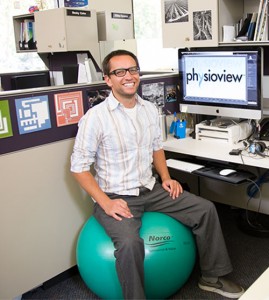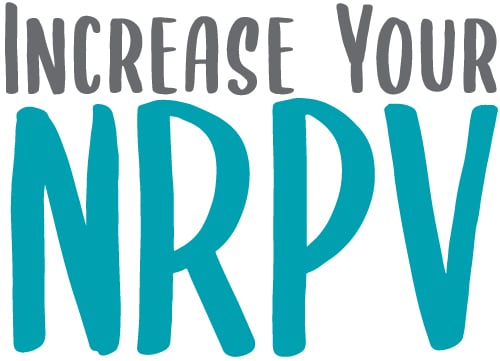Use of an exercise ball for a desk chair creates an active sitting environment.
There have been many studies done on the importance of proper sitting while at a desk at home or at the office. Additional studies suggest that “active sitting” is believed to lead to improved posture, core stability and circulation.
When we sit for prolonged periods of time in “static sitting”, the abdominal muscles may instinctively relax and even atrophy. Back pain and circulation discomfort is a concern. This prolonged postural loading of the spine can reduce joint lubrication and increase stiffness. Sustained postures at a computer can place upper back and neck muscles in positions of strain that can cause muscle tension and pain.
Therapists are encouraging “active sitting” to promote a healthier posture with the longer periods spent sitting. Active sitting or dynamic sitting occurs when “seating allows or encourages the seated occupant to move”. It gets your core muscles working and increases their strength. According to an article written by Larry Swanson, using “active sitting” part of each day puts your core muscles back to work and engages you more physically in your desk job.
Try active sitting yourself:
- put your feet flat on the floor
- sit as tall as you can
- straighten your back
- puff out your chest
- pull in your chin slightly
- push your shoulders down
- move your shoulder blades closer together
Using an exercise ball as a desk chair allows for active sitting. Sitting on a fitness ball encourages good posture and promotes core strength according to an article by the Mayo Clinic staff. The exercise ball provides a low level of neuromuscular activity and may improve balance. An average of 30 more calories a day may be burned just by sitting on an exercise ball rather than a chair.
Nancy Lynch, an adjunct professor at Canisius College, states, “If exercise balls encourage fun-or a less stressful workplace-companies should encourage balls”. She adds, “Activities that get people moving are also good for ‘thinking and problem-solving’.”
Before you begin using an exercise ball remember:
- The ball should be fully inflated
- Feet should be flat on the floor
- The hips should be higher than the knees
Start with 20-30 minutes and stop before fatigue begins. Use an ergonomic chair for support between periods. Return to sitting on the exercise ball throughout the day for 30 minute periods.
The exercise ball does not replace an ergonomic chair. “It does not offer the full support you would expect from an ergonomic chair: stable base, adjustable height and back support” as Peter Budnick states. He does add though, “It sounds like fun”.
Let’s have a ball at work or at home. Let’s have fun while we are improving our health, fitness and possibly losing a few pounds. Sit on an exercise ball throughout your day and enjoy active sitting.
References:
Larry Swanson, “Active Sitting with an Exercise Ball”, Ergonomics, Posture & Body Awareness, November 12, 2008
Mayo Clinic, “Back pain relief: Ergonomic chair or fitness ball?”, May 14, 2012
Associated Press, “Exercise balls as office furniture”, 2012










